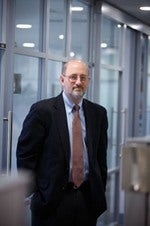For more than 20 years, George Seage, associate professor of epidemiology, has explored the behavioral and biological aspects of HIV transmission. In September 2010, he received an $82.2 million, five-year grant—the second-largest award to the School, after the federal PEPFAR grant—to study two questions: What are the long-term effects on children whose mothers were administered antiretroviral therapy (ART) during pregnancy? And what are the long-term effects of HIV infection acquired just before or after birth on the subsequent growth and development of adolescents? The award is part of the federal Pediatric and HIV/AIDS Cohort Study (PHACS).
With the expanding global epidemic of HIV infection in children, PHACS has enabled researchers to systematically study the long-term consequences of antiretroviral therapies administered early in life.
According to Seage, “These are critically important questions. There are approximately 15 million HIV-infected women of childbearing age throughout the world, with slightly more than half receiving ART when they become pregnant. And there are more than 2.5 million children infected around the time of birth with HIV, only a small fraction of whom are on ART. PHACS will evaluate the safety and effectiveness of antiretroviral therapy among these populations.”
—Madeline Drexler
